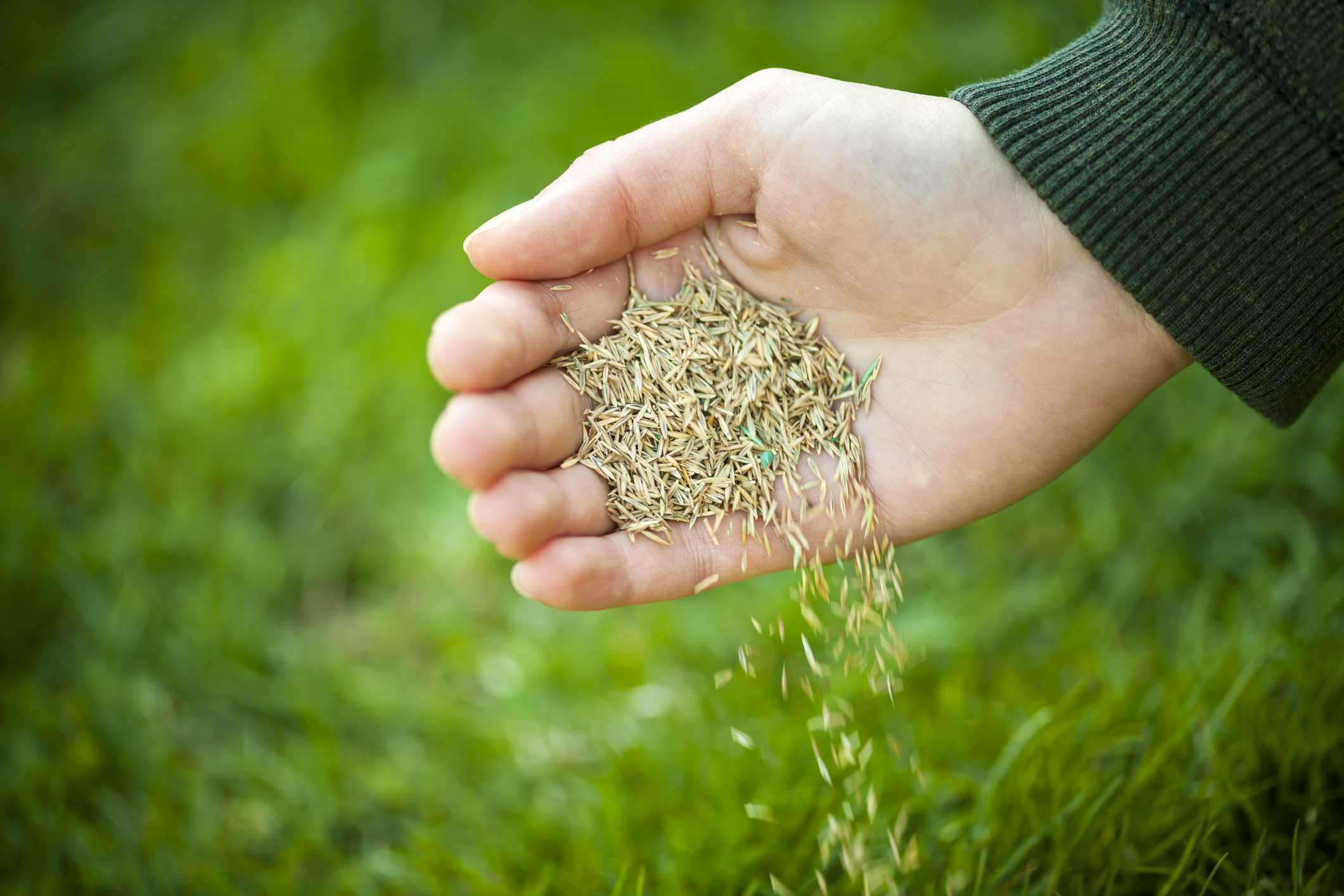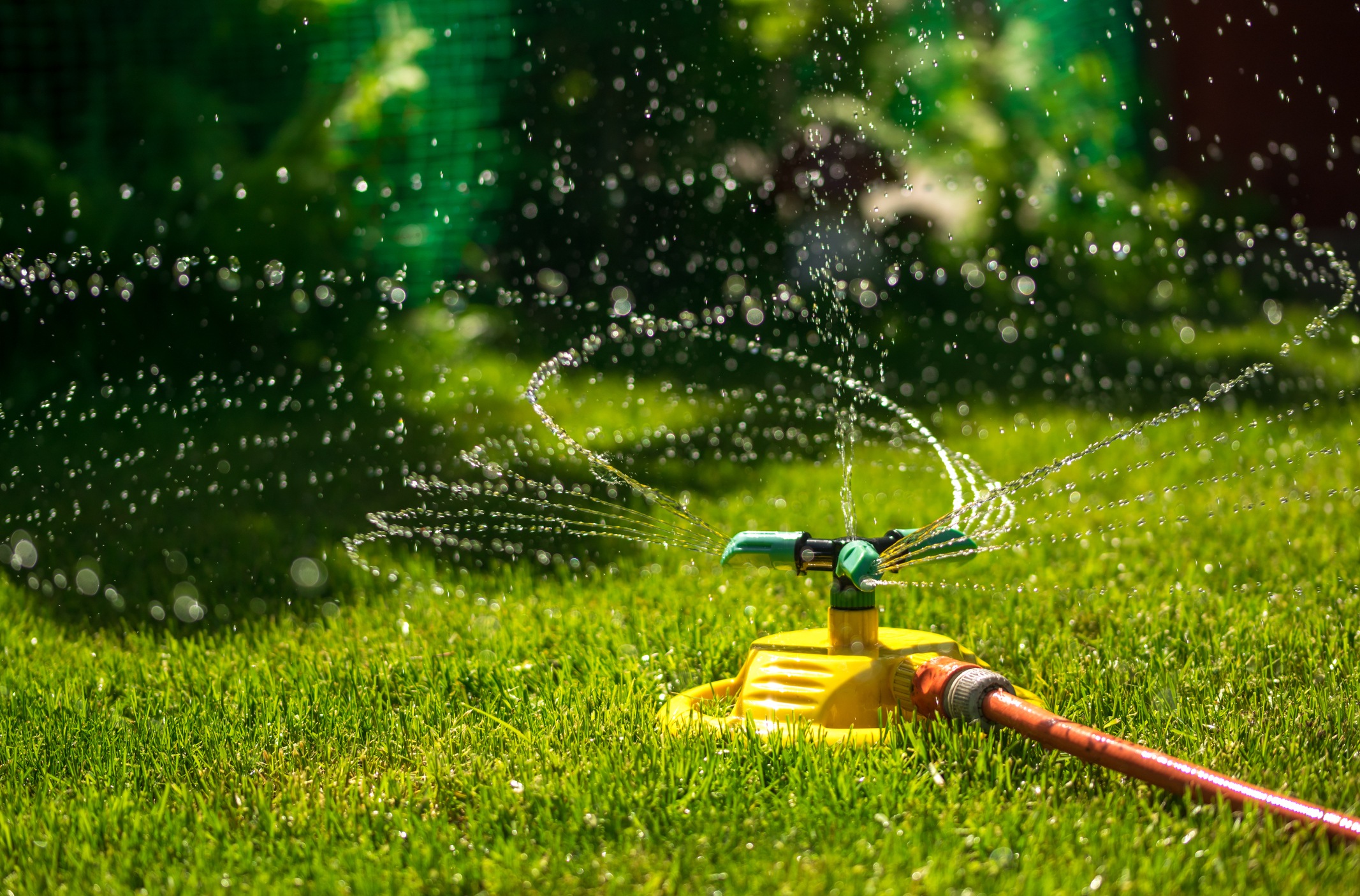The 5 Most Important Fall Lawn Projects That Will Save You Time and Money Next Year

© Getty Images
One of the biggest misconceptions in lawn care is that spring is the best time to tackle your big lawn projects. Well, turns out you shouldn’t hang up the rake and pack away the fertilizer just yet. There’s a better way to a lush, green lawn. According to the turf pros at Grass Seed USA, if you really want to impress your neighbors in the spring, then fall is the ideal time to start prep.
“Once temperatures are consistently below 60 degrees, your lawn will start storing up nutrients in preparation for winter. That’s when you should start your fall lawn care regime,” says Bryan Ostlund, executive director of Grass Seed USA, a national coalition of grass seed farmers and academic turf specialists.
Well maintained natural turf grass lawns also boast tremendous economic and environmental benefits. According to the National Association of Realtors, landscape maintenance is the number one outdoor project most likely to add value to your home. On top of that, a thick, healthy lawn absorbs rainfall and minimizes runoff and potentially damaging erosion by binding the soil. Grass can also reduce your carbon footprint by absorbing and storing away carbon. According to The Lawn Institute, a lawn of just 50 square feet releases enough oxygen to meet the needs of a family of four.
Ready to get started? Don’t worry, seed selection and soil preparation may seem like an overwhelming task when you’d rather be cozied up inside with a warm cider, but the Grass Seed USA lawn experts are here to help. Here’s what they say are the five most important lawncare projects you can do now to improve the quality and sustainability of your lawn, as well as saving you time and money next year.

© Getty Images
Rake
The summer heat, not to mention all of those BBQs, puts a lot of strain on your lawn, likely leaving it thin or bare in areas. To repair your lawn, start by using a straight rake to remove dead organic matter in the bare areas, and fluff the top ½ inch of soil. Removing the thatch layer will loosen up the soil, making it easier for new grass seed to access the soil and root after germinating.

© Getty Images
Aerify
Fall is also ideal for aerification, or cultivating the soil to create air space that promotes a healthy rooting system in natural turf. Spiked aerator shoes or hollow tine lawn aerators are great tools for giving existing grass room to spread its roots. Once you’re done, top dress with soil, compost, or sand at a ¼ inch depth.

© Getty Images
Fertilize
Knowing your growing region is key to choosing whether the planting conditions are right for fertilization. Be sure to talk to a local gardener to determine if applying a lawn fertilizer is appropriate in your region. In the northeast cool region, most grasses respond well to three primary nutrients: nitrogen, phosphorus and potassium. For example, a product with a ratio of 26-7-14 might work well for your lawn.
Fertilizing and seed selection may also depend on the results of a soil analysis. Consider having your soil tested to learn more about the nutrient levels and soil type in your yard. The inexpensive analysis could save you a lot of expenses in the future.

© Getty Images
Interseed
If you do one thing to your yard this fall, make sure it’s interseeding. Adding seed in the fall will give your grass time to grow longer roots. Longer roots increase your lawn’s summer durability and drought tolerance by helping it reach water deeper in the soil. To ensure you purchase the most quality seed possible, check if the seed was tested in the last six months and if the germination rate is 85 percent or better.
Choosing the right seed also has a lot to do with how much sun your lawn receives. If you have a sunny lawn with irrigation, use perennial ryegrass. If you have a sunny lawn without irrigation, use tall fescue. If you have a shady lawn, use fine fescue. If your lawn is a mix of sun and shade, use a blend of perennial ryegrass and fine fescue.
“By reseeding after the summer’s heat subsides and before the first winter freeze, you can repair the damage and give your turf an eight- to nine-month jump start on root growth,” says Ostlund.

/ © Getty Images
Water
Almost done! The summer sun has likely sucked up much of the moisture in the soil, so providing it with ¼ to ½ inch of water per week (via rainfall or irrigation) should help replace it to a healthy level. Lightly watering once or twice a day until the seedlings are as high as the rest of your lawn should do the trick.
It’s not too late – or too early — to jumpstart your lawn. Taking the time now to do the simple lawncare chores like reseeding, weeding, aerating, and fertilizing can pay back big dividends when spring arrives.
“Investing a bit of time and effort in fall maintenance will pay off next year, with greener grass earlier in the spring and a thicker, healthier lawn that is ready to stand up to the rigors of summer wear and tear,” says Ostlund.
To learn more about how to improve the long-term health of your lawn this fall, visit weseedamerica.com.
This is a paid partnership between Grass Seed USA and Boston Magazine